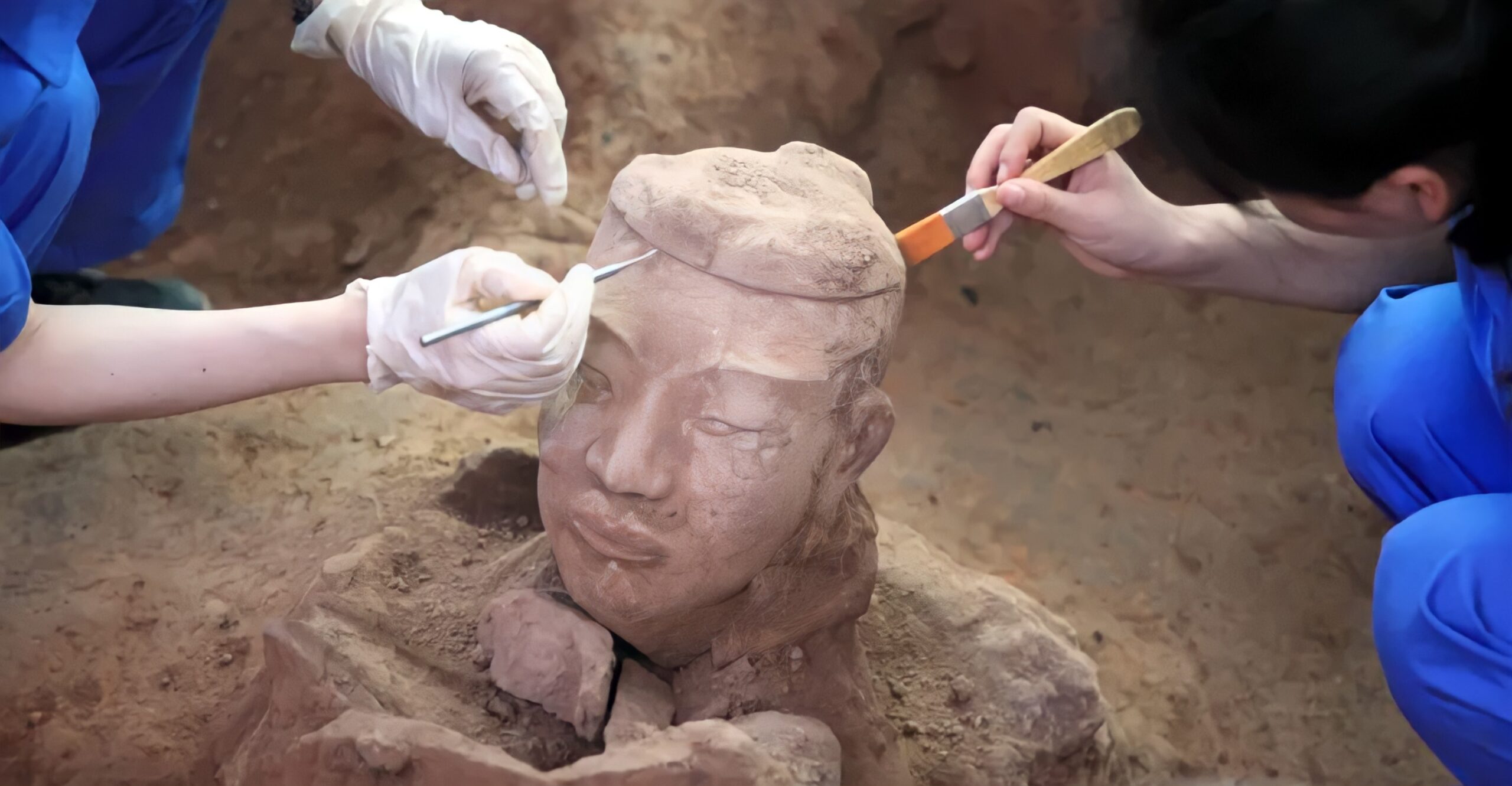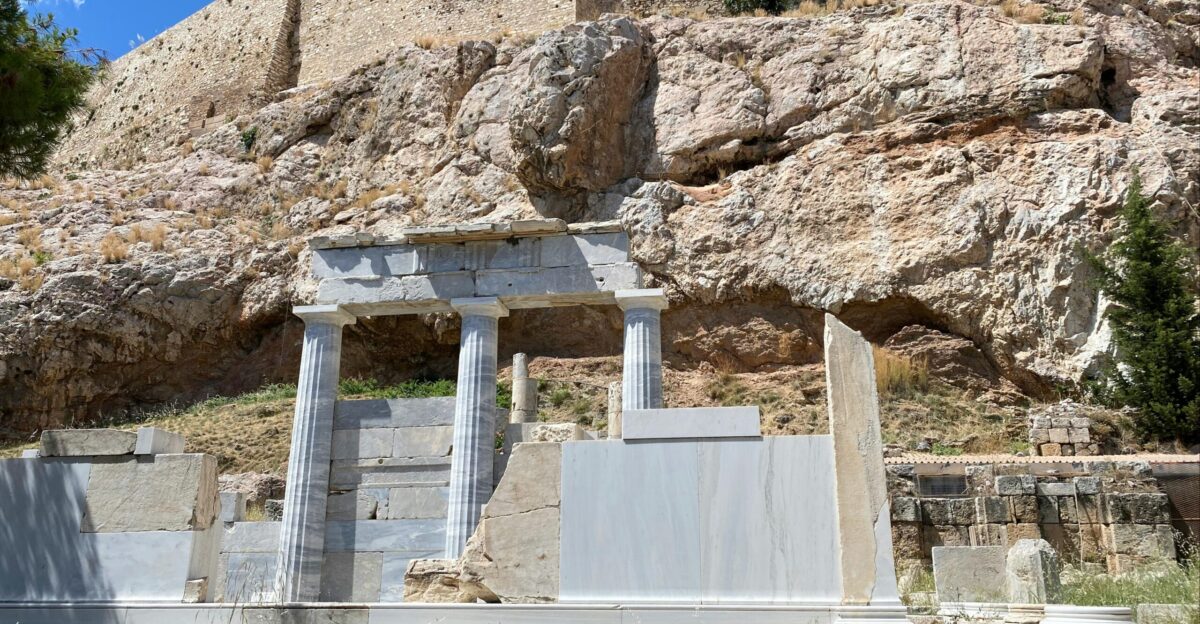
The man’s high-status burial, despite evidence that he spent his life at the potter’s wheel, raises unsettling questions about how ancient Egypt measured worth. Traditionally seen as a rigid hierarchy ruled by bloodlines and proximity to power, this discovery hints at something more complex. Could technical mastery, reputation, or unrecorded service elevate a commoner to elite burial rites?
And if so, how many other graves – misclassified, misunderstood, or still buried – might tell similar stories? One potter’s final resting place may be the first crack in a long-held narrative. Status, it seems, might have been more fluid than history has let on.
Unraveling Ancestry

According to a CNN report scientists revealed that nearly 20% of the man’s DNA traced back to ancient Mesopotamia. For years, archaeologists pointed to shared pottery styles and writing systems as clues of contact between the Nile and the Fertile Crescent. But this is the first definitive genetic proof of people, moving between these worlds.
Was this man an isolated outlier, or a surviving thread in a much wider, long-forgotten migration?
A Buried Legacy

The survival of this genome wasn’t chance … it hinged on a sealed ceramic burial vessel. Decades of failed DNA extractions blamed Egypt’s relentless heat and harsh embalming chemicals, but this rare tomb created a protective microclimate that preserved the man’s genetic blueprint.
His resting place dates to a crucial era when Egypt evolved from scattered farming communities into a centralized kingdom – a turning point that reshaped culture, power, and history itself.
DNA Breakthrough

This man’s genome stands as the oldest ever sequenced from Egypt, and it reveals a striking genetic blend: 80% North African ancestry paired with 20% roots tracing back to the Fertile Crescent. This unprecedented decoding connects Egypt’s early state-builders to distant lands, offering concrete proof of population mingling at a pivotal moment in human history.
Egypt at a Crossroads

The genome also strengthens the idea that people flowed freely between Egypt, Sub-Saharan Africa, and the Middle East. The Nile was more than a river; it was a cultural expressway. Where genetic proof was once absent, this discovery now reveals that Egypt’s famed unity rested on far richer, more diverse roots than its monumental façade ever hinted.
Data’s Broader Echo

PBS NewsHour reported that this genome helps place Egypt into larger migration patterns. Once thought isolated, the Nile Valley is now seen as an “ancient superhighway,” as one expert called it – a busy route where goods, ideas, and people moved back and forth. This steady flow of genes changed entire populations and changes how we understand the connections between Africa and the Middle East long ago.
Shifting Baselines

For years, scientists struggled to get usable DNA from dry places like Egypt, where the heat and environment destroy genetic material. This new breakthrough has sparked fresh interest and raised important questions about how to handle ancient DNA responsibly. Thanks to careful science, this success could set new global standards for studying fragile remains in tough climates and help unlock more ancient mysteries.
Regional Impacts

The discovery has already stirred Egyptologists and geneticists into action. Pot-sealed burials, once dismissed or misclassified, are now being reexamined in museums around the world. Egyptian institutions that had quietly stored such remains for years suddenly find themselves holding keys to ancient genetic mysteries.
Frustrations Surface

There are some Egyptian archaeologists who warn that one person’s DNA can’t represent all of Old Kingdom Egypt, and they urge caution before drawing conclusions. Still, the researchers say science often advances by studying rare, well-preserved examples. Finding more samples could either support or challenge these surprising new insights into Egypt’s ancient past.
Ownership Shift

A joint statement from the University of Aberdeen, revealed that the human remains studied were originally exported from Egypt in the early 20th century. Today, their genetic legacy is driving a new era of collaborative research. Museums worldwide are being encouraged to work alongside Egyptian scholars, while initiatives aim to expand access to cutting-edge tools and training within Egypt itself, shifting the story toward shared discovery and stewardship.
Human Story Unfolds

A press release from Liverpool John Moores University revealed the man was likely a potter in his sixties, an occupation marked by repetitive, physically demanding work. Yet, his burial featured high-status rituals, hinting at rare social mobility or exceptional recognition. This intriguing contrast raises questions: Was his skill so extraordinary that it transcended class boundaries, or does his story reveal a hidden layer of ancient Egyptian society where talent earned its own place of honor?
Social Status Ripple

The burial doesn’t just raise questions about social class, it also challenges how we define power in ancient Egypt. Rather than a rigid system ruled only by elites, this find suggests influence may have come in many forms: craftsmanship, religious role, or community leadership. It invites us to rethink who mattered in early Egyptian society, not just the pharaohs and priests, but skilled hands and respected voices whose stories rarely made it into stone.
Comeback Plans

Archaeological teams are gearing up for focused digs in Upper Egypt and the Nile Delta, targeting untouched pot burials. New DNA sequencing methods promise to uncover even older or more complete genetic information. At the same time, experts are pushing to connect genetic data with bones, artifacts, and environmental clues in unified databases.
Expert Caution

Dr. Pontus Skoglund of the Francis Crick Institute urges caution. “Written records have long shaped our understanding of history,” he explains, “but biological methods offer a new perspective that must be balanced with context.” While ancient DNA uncovers intriguing patterns, it doesn’t tell the whole story. As he reminds us, the past is never shaped by a single type of evidence alone.
New Questions

The Nature article that broke the story ends with a lingering thought: If Egypt’s pyramid builders carried foreign genes, how many other civilization icons are also woven from unexpected threads? As more genomes surface, we may find that migration and exchange – not isolation – are the true engines of history. In doing so, modern cultural purity ideas may disappear, replaced by a richer, messier, and more interconnected human story.






